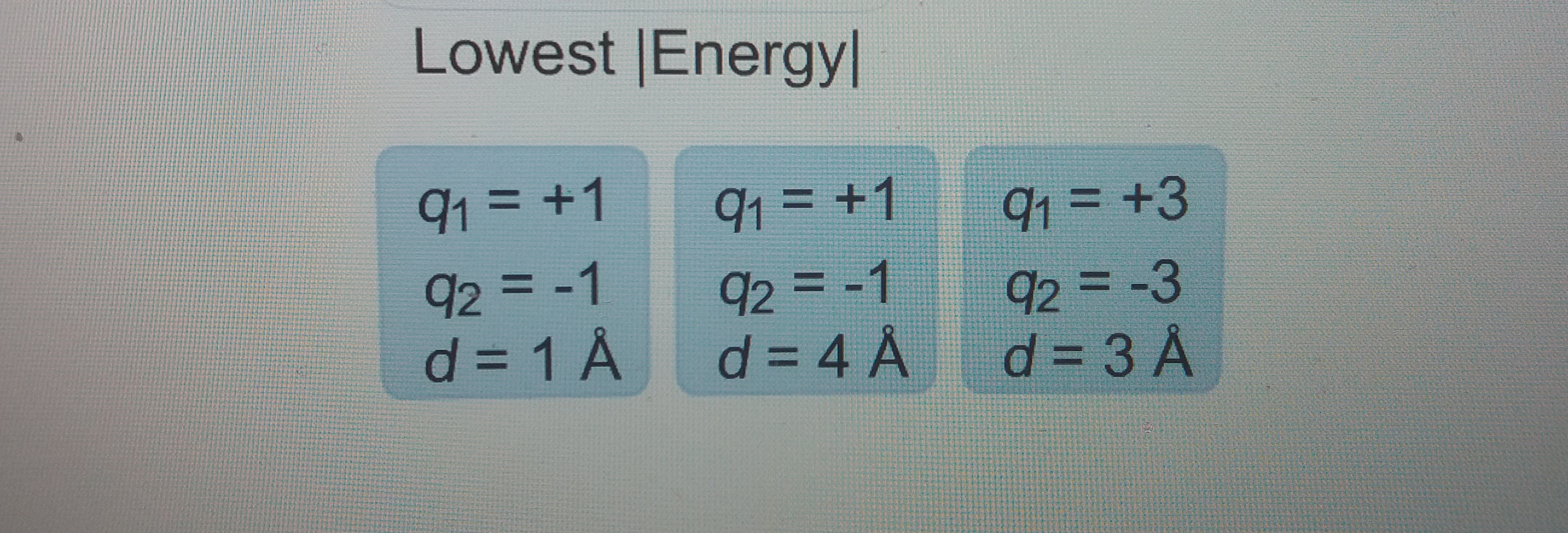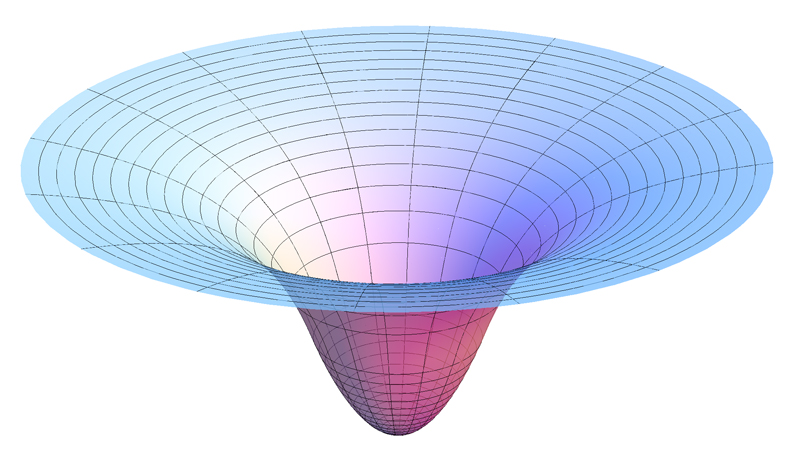Two particles with charges #q_1# and #q_2# are separated by distance d. Rank these scenarios according to the magnitude of the electrostatic (coulombic) potential energy. Ignore sign. Rank from height to lowest energy?

#(a)# #q_1 = +1, q_2 = -1, d = 1Å#
#(b)# #q_1 = +1, q_2 = -1, d = 4Å#
#(c)# #q_1 = +3, q_2 = -3, d = 3Å#

1 Answer
Explanation:
The equation for calculating electrostatic potential energy between two point charge is
#V=1/(4pi epsilon_0)(q_1*q_2)/(r)# ,where
#epsilon_0# is the vacuum permittivity.#q_1*q_2# is the product of the two charges, and#r# is their separation. Notice that the unit of the separation used in this question, the ångström , converts to meters at a one-to-#10^(-10)# ratio.
As a result
#V_1=1/(4pi epsilon_0)(-1)/(1*10^(-10))=-1/(1 cdot 4pi epsilon_0)10^(10)#
#V_2=1/(4pi epsilon_0)(-1)/(4*10^(-10))=-1/(4 cdot 4pi epsilon_0)10^(10)#
#V_3=1/(4pi epsilon_0)(-9)/(3*10^(-10))=-1/(3 cdot 4pi epsilon_0)10^(10)#
You don't have to evaluate the expression since the problem is only asking for a comparison between the three values.
As a result
Note that all of the potential energy values here are negative. Since by convention, we would consider the potential energy of a charge to be zero when it is infinitely away from the other charge.

Alternatively, consider the energy changes involved as you try to separate the two charges; they would attract each other, so it takes an input of energy to pull them apart.


